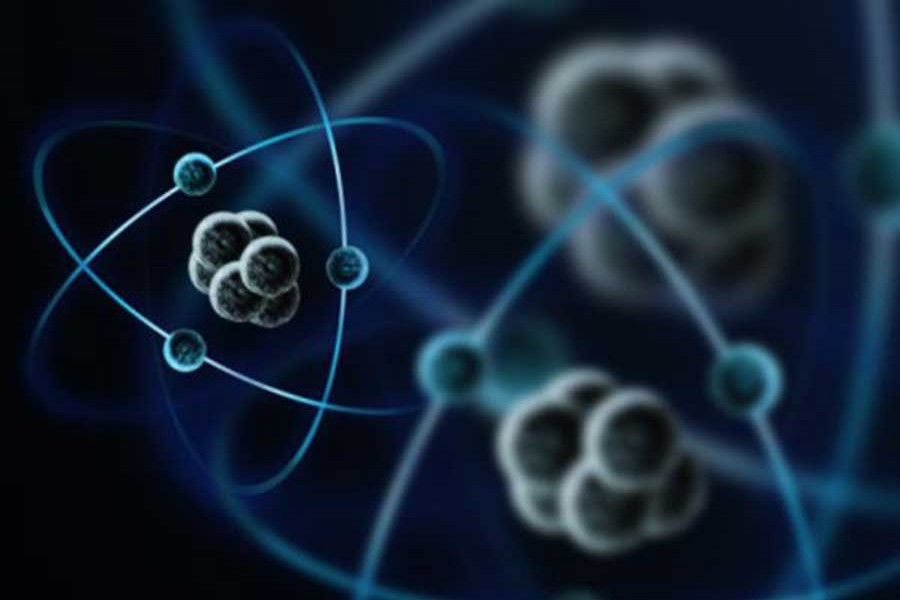No more the effect would follow the cause. What was stashed away in the nook and fold of quantum physics, finally seems to have found light of the millenia. Thanks to this discipline, a latest finding broke the age-old chicken and the egg conundrum.
In an email interaction, lead scientist of this research Dr. Mary Jacquiline Romero observed, "chicken and egg is just a metaphor. We are saying that in quantum physics what is before and after can be indefinite - in the question which came first, chicken or egg", they can both come first.
According to quantum mechanics, the order of occurrence of the two events cannot be determined. And that baffles the issue all the more. Not that quantum physics did not baffle matters earlier.
Serge Haroche and David Wineland talked of simultaneity at the quantum level. They demonstrated electrons can exist in two places at the same time in a research that won them the coveted Nobel Prize in 2012 for showing pathway towards building a new type of superfast computer and super-precise clock capable of setting new standard of time.
On similar lines, the new research pointed out, a diagonally polarised photon can function in two ways at the same time - both events taking place first.
In fact, this cause and effect conundrum - first the chicken or the egg - had Aristotle (384-322BC) to Stephen Hawking (2018-1942) racking their brains. In between, mere mortals like us passed this causality dilemma off as a good metaphor to phase out dicey scenarios.
For, this paradox has always ended up at the same place from where it popped up. Luna Lovegood, the witch in Harry Potter's novel, too was clueless. To her, this riddle was like a circle without a beginning.
In science, the chicken or the egg first situation is referred to as circular reference. This means, one needs to know the very parameter itself to calculate a particular parameter. Simplified, though confusing it may still sound, one must know something to calculate that same something. Now this process sparks off an enigma as to which of the two is the cause and the effect vis-a-vis their order of occurrence.
Back in ancient Greece, well-known writer and philosopher Plutarch (42-128 AD) deeply pondered as to which predated the other - the hen or the egg. But he ultimately failed to come up with anything definitive. Much earlier, Aristotle who also toyed with the same conundrum, had claimed, the chicken and the egg both had always existed and went much long back in time. François Fénelon in his 1825 book, translated into english, "Lives of the Ancient Philosophers", described Aristotle's perspective : "There could not have been a first egg to give a beginning to birds, or there would have been a first bird which gave a beginning to eggs ; for a bird comes from an egg."
While scholars philosophised, scientists got down to researching solution to this age-old puzzle. In 2010, writing their findings in the "Structural Control Of Crystal Nuclei By An Eggshell Protein" journal, researchers from the Warwick and Sheffield University's department of Engineering Materials, vouched for chicken to be the first. Using supercomputing, the scientists closely observed the formation of an egg. They concluded that eggshells are formed from a protein, ovocledidin-17, found only in a chicken's ovary. Therefore, an egg can exist only if it has been inside a chicken. Although when asked later if it really proved the chicken preceded the egg, researcher Mark Rodger passed it off as a fun but pointless question.
Time posited a different view. In the magazine's 'Now You Know' section, Merrill Fabry voted for the egg first. She scientifically backed her analysis with the logic that the oldest fossils of dinosaur eggs and embryos are about 190 million years old. Archaeopteryx fossils, generally considered as the oldest birds, are around 150 million years old. Thus she gave precedence to egg over chicken.
While interacting with the differently able children in the Bridge School in San Jose, when a student put this riddle to Stephen Hawking, he too went for the egg first. The latest research, however, seems to have gone completely wayward from all of the earlier logics propounded from time immemorial until recently. In quantum physics, cause and effect does not always follow a set order, meaning one event would not follow the other.
To arrive at this point of conclusion, physicists from The University of Queensland and the NÉEL Institute constructed a photonic quantum switch. It's a device that enables the order of events based on light polarisation. The researchers measured the polarisation of the photons at the output of the quantum switch and demonstrated that the order of transformations on the shape of light was not set.
To relate their experiment to our daily task, Dr. Romero pulled up an example of us commuting to work everyday. We either take the bus first and then the train, or the other way round. In their experiment, both these events can happen first. This phenomena, called the indefinite causal order, which we do not face in our daily life, although weirdly, exist at the quantum level. The researchers recently published their paper 'Indefinite Causal Order in a Quantum Switch' in the journal Physical Reviews Letters by the American Physical Society.
Now whether this finding lends an ultimate solution to this conundrum or whips up a greater mystery, is left for further analysis.
Kaushik Bhowmik is an IT Analyst based in Kolkata, India.


